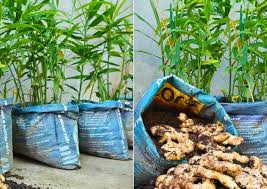Galangal (Alpinia galanga) is a unique herb commonly used in Asian cuisine, renowned for its bold flavor and versatility. Cultivating galangal in your garden or even in a pot ensures a fresh, continuous supply of this exotic spice. This guide will walk you through the essential steps to successfully grow galangal at home.
1. Getting Started
Choosing the Right Location:
Galangal thrives in warm, tropical climates and requires partial to full sunlight. Select a spot with well-draining soil, rich in organic matter. Since galangal is sensitive to cold, ensure the area stays consistently warm to foster healthy growth.
Obtaining Galangal Rhizomes:
Start with healthy galangal rhizomes, which are available at many Asian grocery stores or online. Choose firm, disease-free rhizomes to ensure a strong start for your plants.
2. Planting Galangal Rhizomes
Choosing a Planting Site:
You can grow galangal in a garden bed or a large container. If opting for a container, select one that is at least 12 inches deep with proper drainage.
Planting Depth:
Plant the rhizomes about 2 inches deep, with the flat side facing down and the growing buds pointing upward. Space the rhizomes 12-18 inches apart to provide room for healthy growth.
Soil Preparation:
Prepare the soil by incorporating well-rotted compost or organic matter. Galangal prefers slightly acidic to neutral soil (pH 6.0-7.0), which ensures the best conditions for healthy growth.
3. Care and Maintenance
Watering:
Maintain consistent moisture in the soil, but avoid waterlogging. Depending on your climate, watering every few days should suffice, but adjust the frequency as needed.
Fertilizing:
Use a balanced, slow-release fertilizer in spring to encourage growth. Reapply every 2-3 months throughout the growing season for sustained health and productivity.
Mulching:
Apply mulch such as straw or wood chips around the plants. Mulch helps retain moisture, keeps the soil cool, and reduces weed growth.
Pruning:
Trim any dead or damaged leaves to improve the plant’s appearance and health. Galangal can grow up to 6 feet tall, so regular pruning helps manage its size.
Pest and Disease Management:
Though galangal is generally resistant to pests and diseases, it’s still important to monitor for any issues. Use garden insecticides as necessary to protect your plants.

4. Harvesting Galangal
Patience is Essential:
Galangal takes 8-10 months to fully mature. During this time, the rhizomes develop underground, so patience is key.
Harvesting:
Once the plant reaches maturity, use a garden fork to carefully dig up the rhizomes. Remove the soil gently and cut off the desired portion, leaving some rhizomes in the ground for future growth.
5. Storing Galangal
Using Fresh Galangal:
Fresh galangal can be used immediately in your cooking, offering maximum flavor and freshness.
Drying for Long-Term Storage:
If you have excess galangal, slice and dehydrate it to preserve its shelf life. Store the dried pieces in an airtight container to keep them fresh.
Freezing:
For long-term storage, you can freeze galangal. Simply slice or grate it, then place it in an airtight container or bag in the freezer for easy use later.
6. Propagating Galangal
To propagate galangal, divide the rhizomes during the plant’s dormant season. Separate the rhizomes into smaller sections and replant them to grow new plants.
Growing galangal at home is a fulfilling process that yields a fresh, flavorful herb for your kitchen. With proper care, you can enjoy its unique taste and aroma, whether grown in your garden or a container. Tailor your care to your climate and growing conditions for the best results. Happy gardening and cooking!
